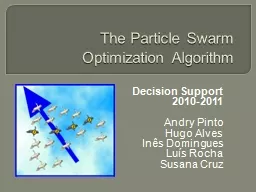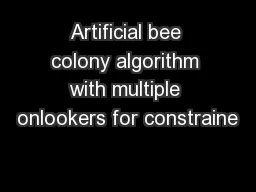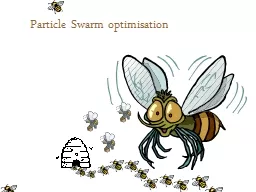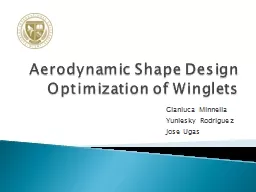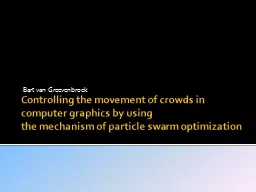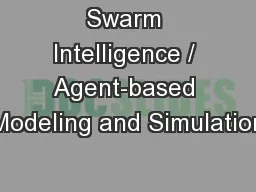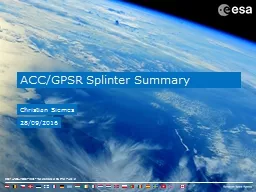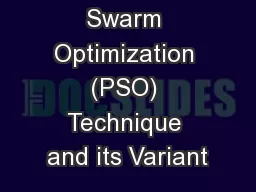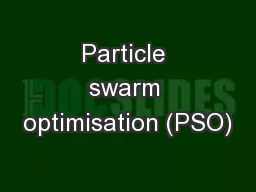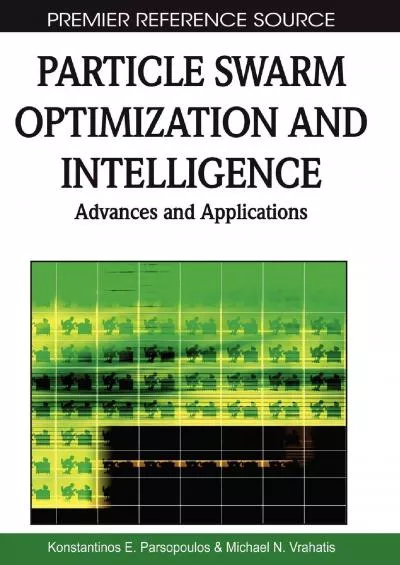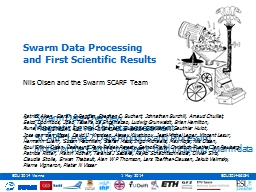PPT-The Particle Swarm Optimization
Author : phoebe-click | Published Date : 2018-11-18
Algorithm Decision Support 20102011 Andry Pinto Hugo Alves Inês Domingues Luís Rocha Susana Cruz Summary Introduction to Particle Swarm Optimization PSO Origins
Presentation Embed Code
Download Presentation
Download Presentation The PPT/PDF document "The Particle Swarm Optimization" is the property of its rightful owner. Permission is granted to download and print the materials on this website for personal, non-commercial use only, and to display it on your personal computer provided you do not modify the materials and that you retain all copyright notices contained in the materials. By downloading content from our website, you accept the terms of this agreement.
The Particle Swarm Optimization: Transcript
Download Rules Of Document
"The Particle Swarm Optimization"The content belongs to its owner. You may download and print it for personal use, without modification, and keep all copyright notices. By downloading, you agree to these terms.
Related Documents

